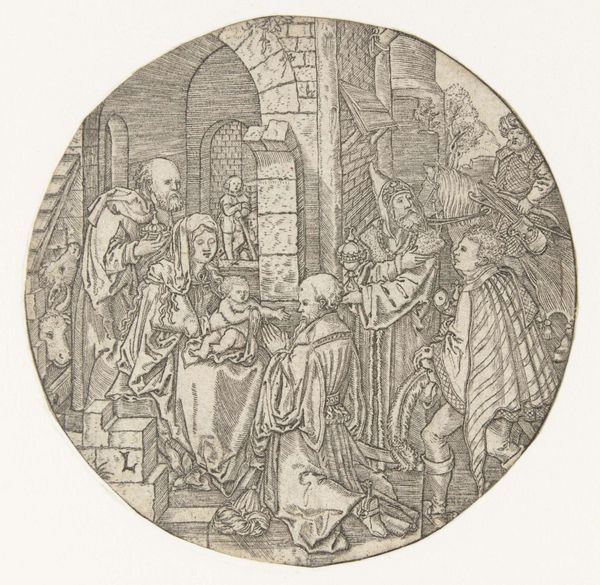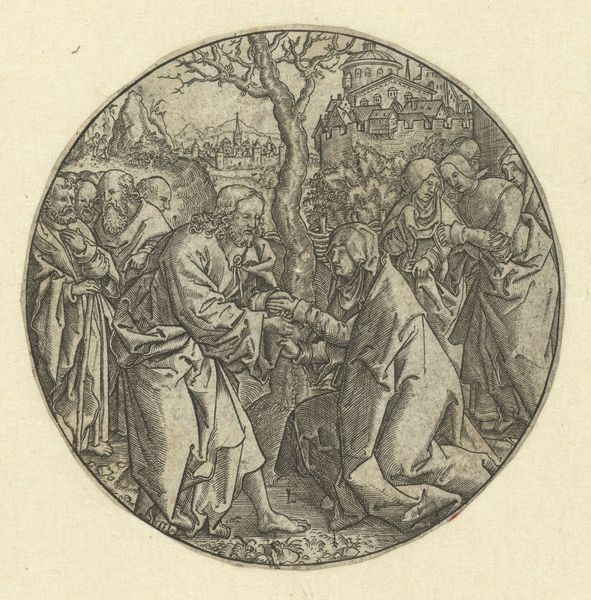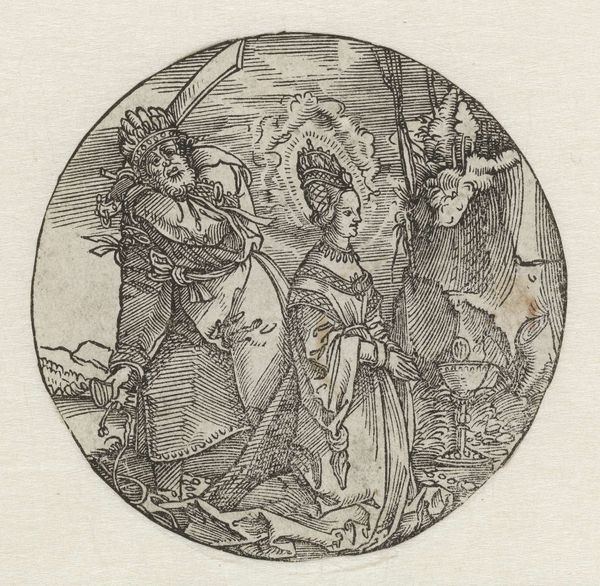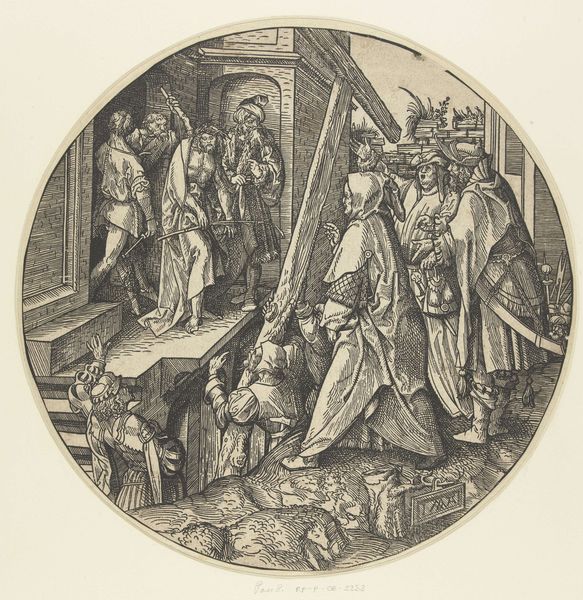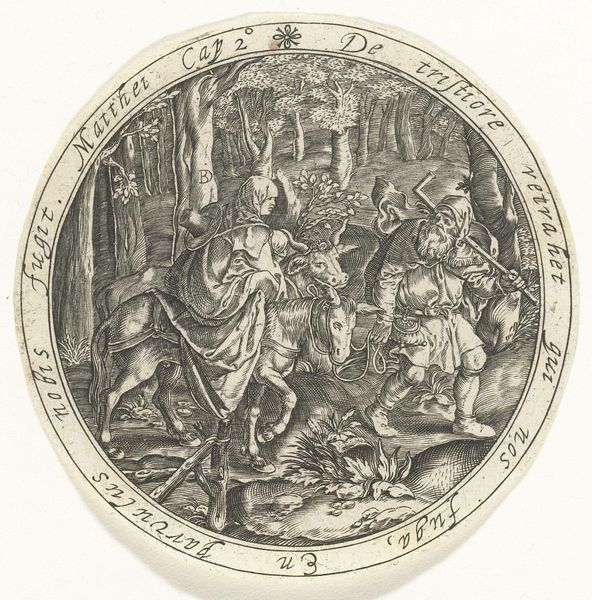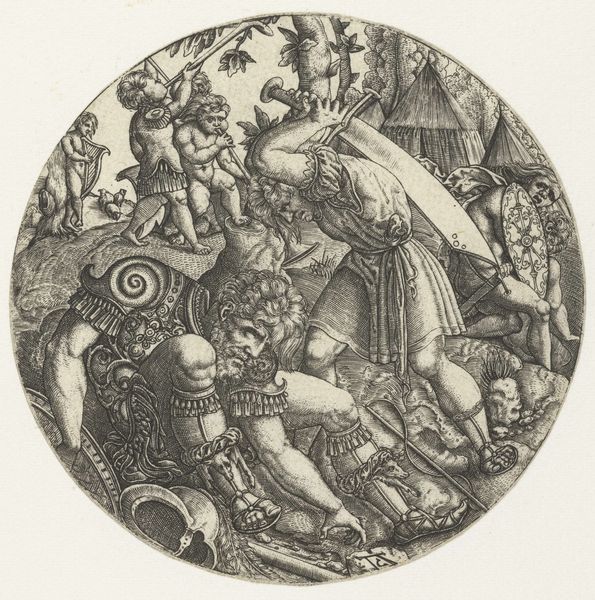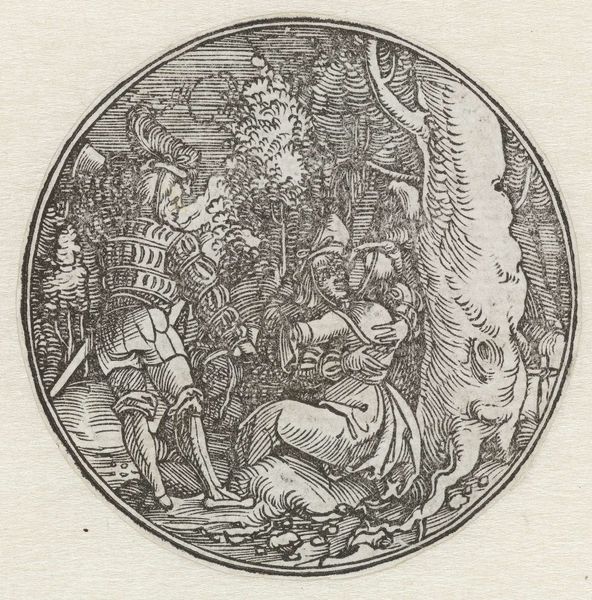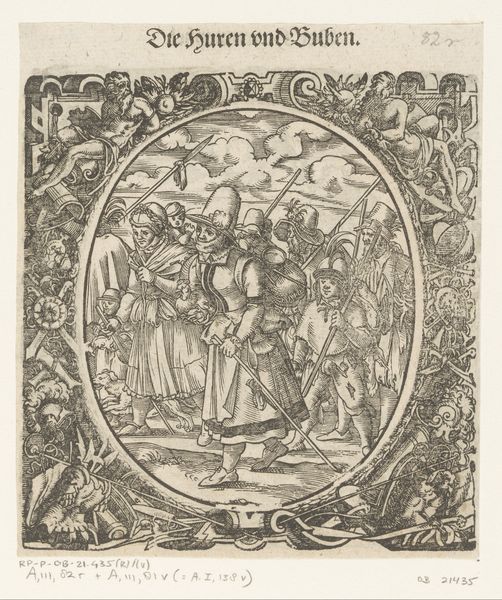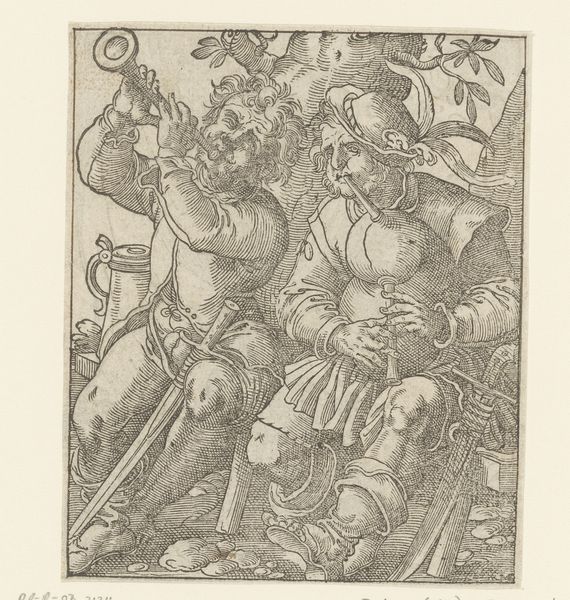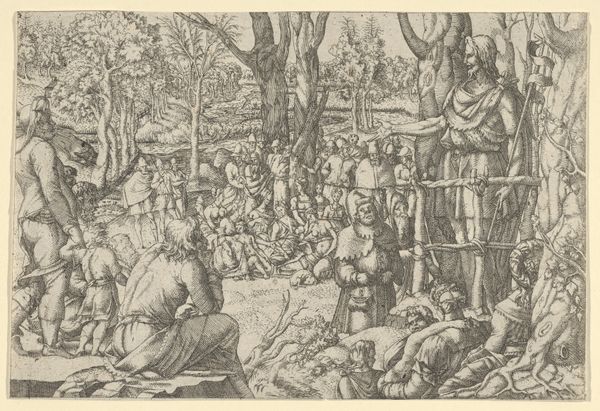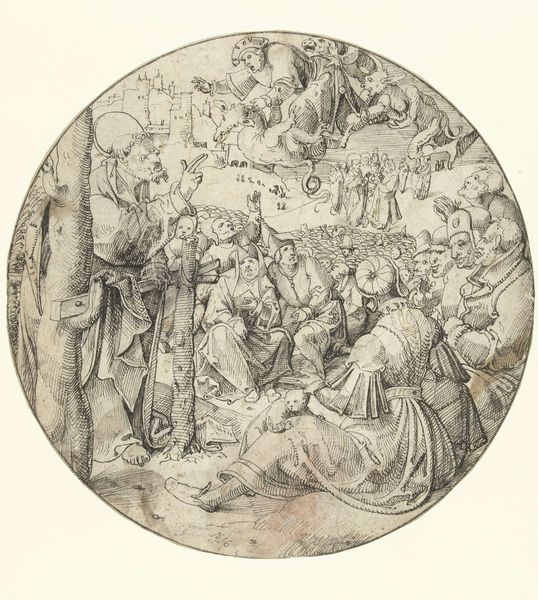
print, engraving
#
narrative-art
# print
#
old engraving style
#
history-painting
#
northern-renaissance
#
engraving
#
intricate and detailed
Copyright: Rijks Museum: Open Domain
Curator: Here we have "The Flight into Egypt", an engraving made sometime between 1500 and 1524, crafted by the artist known only as Monogrammist L. It's a Northern Renaissance piece. What's your first impression? Editor: It's dense! So much detail packed into this circular format. The texture and contrasts created by the engraving are quite striking. It feels…oppressive, almost claustrophobic with that dense forest looming. Curator: Yes, note how the anonymous engraver’s craft highlights the labor involved. Look closely; this wasn't quickly done. Think about the engraver, hunched over, meticulously working the metal. Each line a physical act contributing to the final product and it´s overall purpose. Editor: I see what you mean. The meticulous detail, especially in the landscape, echoes the precision demanded by the medium itself. Look at the overlapping of foliage, the rendering of Joseph’s clothes and bare feet, and the shadows they cast. There's an attention to light that gives it depth. Curator: Exactly. And considering the historical context, such prints were accessible—a stark contrast to paintings owned solely by the elite. This print brings biblical narratives directly to those with limited access otherwise, functioning as both art object and vehicle for faith. How do you interpret that, formally? Editor: Formally, this allows for much interpretation! I'm seeing a composition clearly separated in terms of light and shadow. Notice how the darkest patches of dense forest in the back are countered by lighter sections of foreground around the figures. The artist used light to direct our gaze to the main subjects, like the serene expression on Mary's face as she’s carried into this intimidating wilderness. Curator: True. It makes one think of the social impact of such imagery. It provided a visual narrative to people whose lives were filled with toil and uncertainty. Also, notice the circle shape itself, a distinct choice affecting not only the image's design, but its potential utility. It could have been purposed in several ways. Editor: That’s right, these formal decisions—the composition, the contrast, even the circular form itself—are key to understanding how it communicates. Curator: An interesting dialogue indeed. It prompts consideration for not just the image, but the means and impact of its dissemination. Editor: Absolutely. Reflecting on the engraver’s labor highlights the purpose and potency this single image embodies within a complex network.
Comments
No comments
Be the first to comment and join the conversation on the ultimate creative platform.
